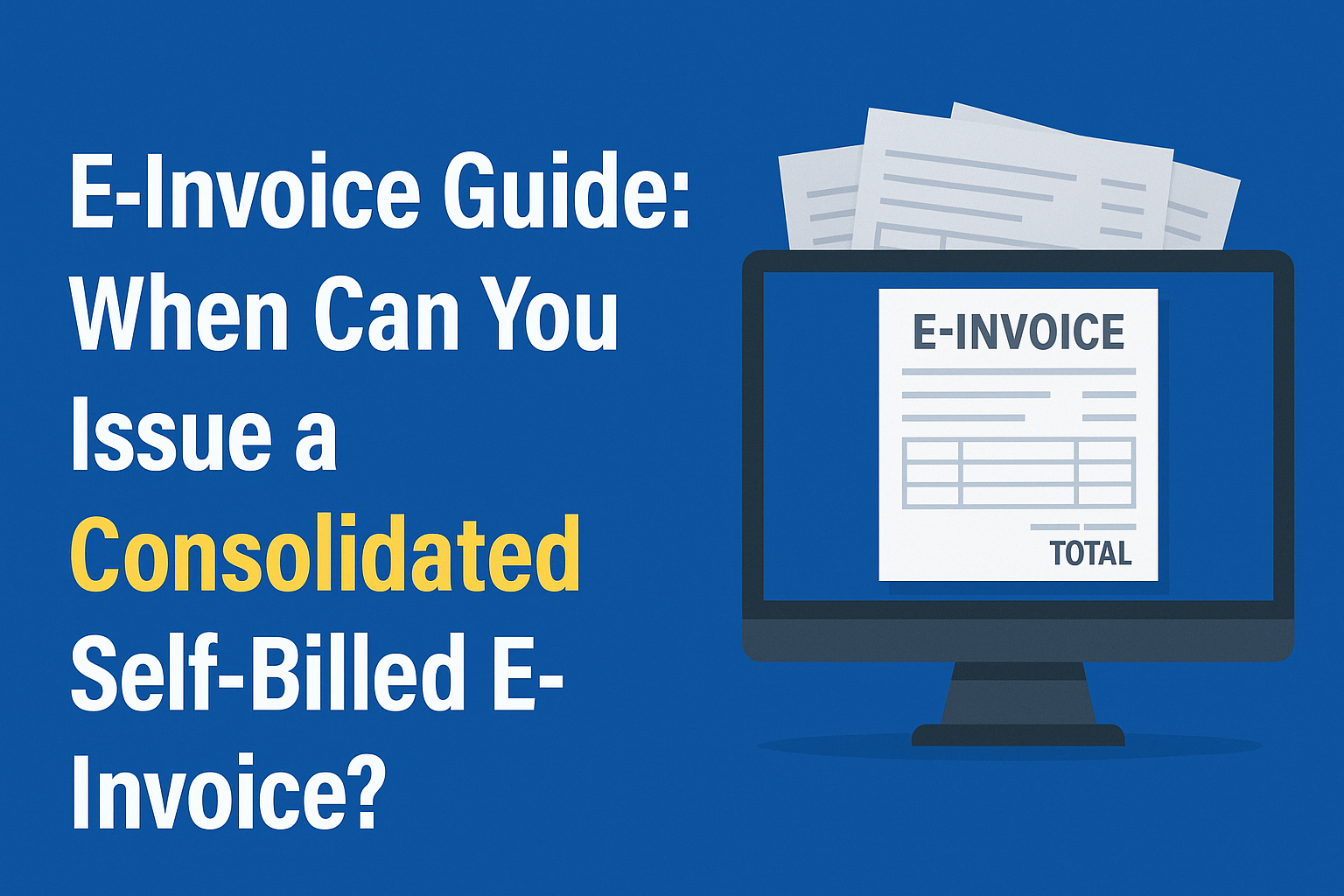As Malaysian businesses adapt to the mandatory e-invoicing system, many are encountering specific, complex transaction types. One of the most common questions is: “How do I issue an e-invoice for payments made to individuals who are not running a business, like freelancers, agents, or members of the public?”
The answer lies in a “self-billed e-invoice”—an e-invoice issued by the buyer on behalf of the seller. But what if you make numerous small payments to these individuals every month? To solve this, LHDN allows for a “consolidated self-billed e-invoice” under very specific circumstances.
With the initial 6-month relaxation period for e-invoicing ending, it is now crucial to understand the strict rules for when this convenient option is permitted.
What is a Consolidated Self-Billed E-Invoice?
Let’s break it down:
- Self-Billed E-Invoice: An e-invoice that the buyer of goods or services issues to themselves on behalf of a supplier who cannot issue an e-invoice (e.g., an individual without a business).
- Consolidated E-Invoice: A single, monthly e-invoice that combines multiple transactions from the same supplier into one document to reduce administrative work.
Therefore, a consolidated self-billed e-invoice is a single monthly e-invoice that a business issues for all transactions with a specific non-business supplier.
The Four Approved Scenarios for Consolidation
According to the latest e-invoicing guidelines, businesses are only allowed to issue a consolidated self-billed e-invoice in the following four situations:
1.
Transactions with Individuals Not Running a Business
This is the most common scenario for many SMEs. It applies when you make payments to individuals who are not operating as a formal business.
- Example: Your company pays monthly commissions to multiple freelance sales agents, or you purchase secondhand goods from members of the public. You can issue one consolidated e-invoice per agent at the end of the month to cover all commissions earned.
2.
Interest Payments to the Public at Large
This generally applies to financial institutions.
- Example: A bank paying out monthly interest to its vast number of individual savings account holders can use a consolidated self-billed e-invoice for these transactions.
3.
Insurance or Government Payouts
This applies to payments made from the insurance sector or government bodies to individuals.
- Example: An insurance company processing multiple claim payments or benefit payouts to an individual policyholder can consolidate these into a single self-billed e-invoice.
4.
Transactions with Your Own Overseas Branches
This applies to internal cross-border transactions within the same company.
- Example: A Malaysian headquarters (HQ) self-billing for services rendered or transactions with its own branch office located overseas.
Important: The End of the Relaxation Period
It is crucial to note that an initial 6-month interim relaxation period for e-invoicing (which ran from Jan 1, 2025, to June 30, 2025) has now concluded. During that time, the rules for issuing consolidated self-billed e-invoices were more flexible.
From July 1, 2025, onwards, businesses MUST strictly adhere to only the four approved scenarios listed above. Other than these circumstances, business operators are not allowed to issue consolidated self-billed e-invoices.
What This Means for Your Business
- Review Your Payment Processes: Identify all suppliers or payees for whom you are currently issuing self-billed e-invoices.
- Check for Compliance: If you are consolidating these invoices monthly, you must ensure your situation perfectly matches one of the four approved scenarios.
- Adjust Your Workflow: If your current practice does not fall under the approved list, you must adjust your workflow to issue a separate self-billed e-invoice for each individual transaction moving forward.
Expert Guidance on E-Invoicing Complexities
E-invoicing compliance goes far beyond just issuing sales invoices. It requires a deep understanding of nuanced situations like self-billing, cross-border transactions, and consolidation rules.
At SMONE, our Cloud Accounting & Digitalization service ensures your business processes are fully compliant with the latest and most detailed LHDN guidelines. We can help you configure your system to handle complex scenarios correctly, saving you from potential compliance risks.
Contact us today for an expert consultation on your e-invoicing workflow.
(Disclaimer)
This article is for general informational purposes. It does not constitute legal or tax advice. Please refer to the latest official guidelines from LHDN for complete information.


